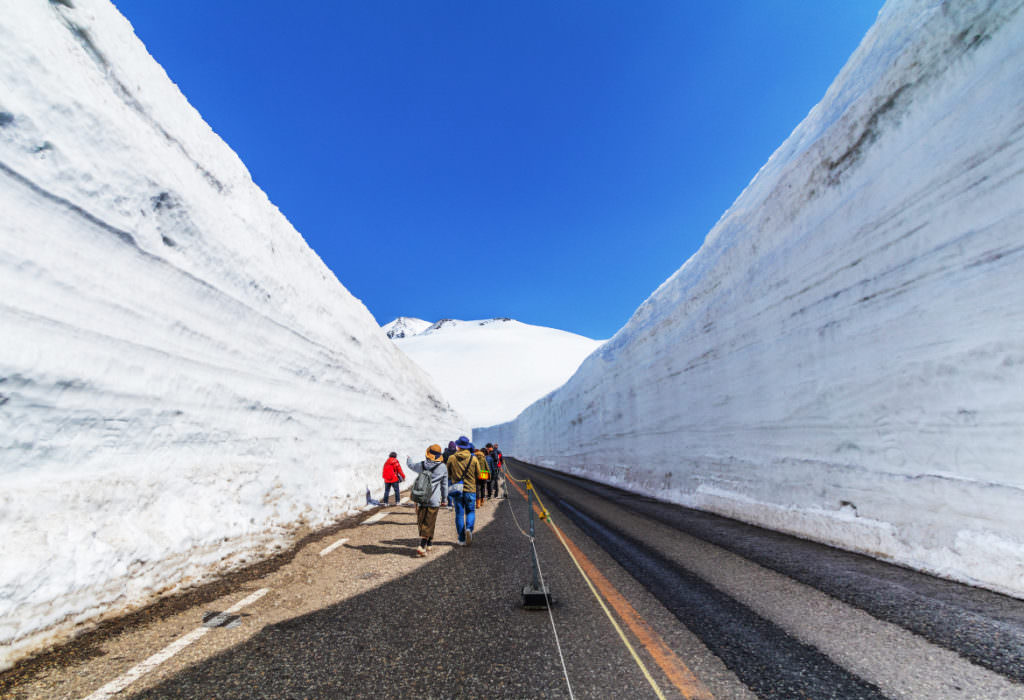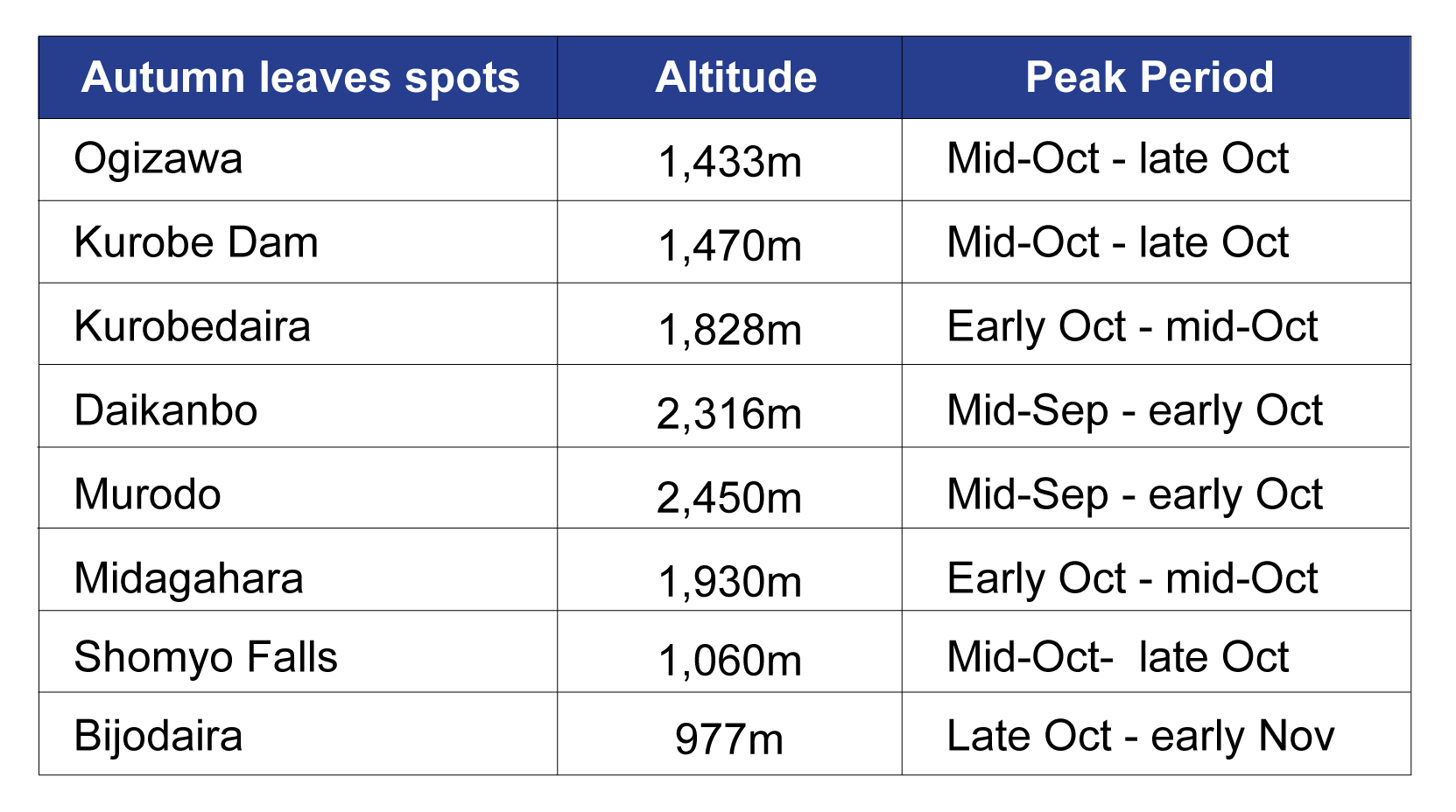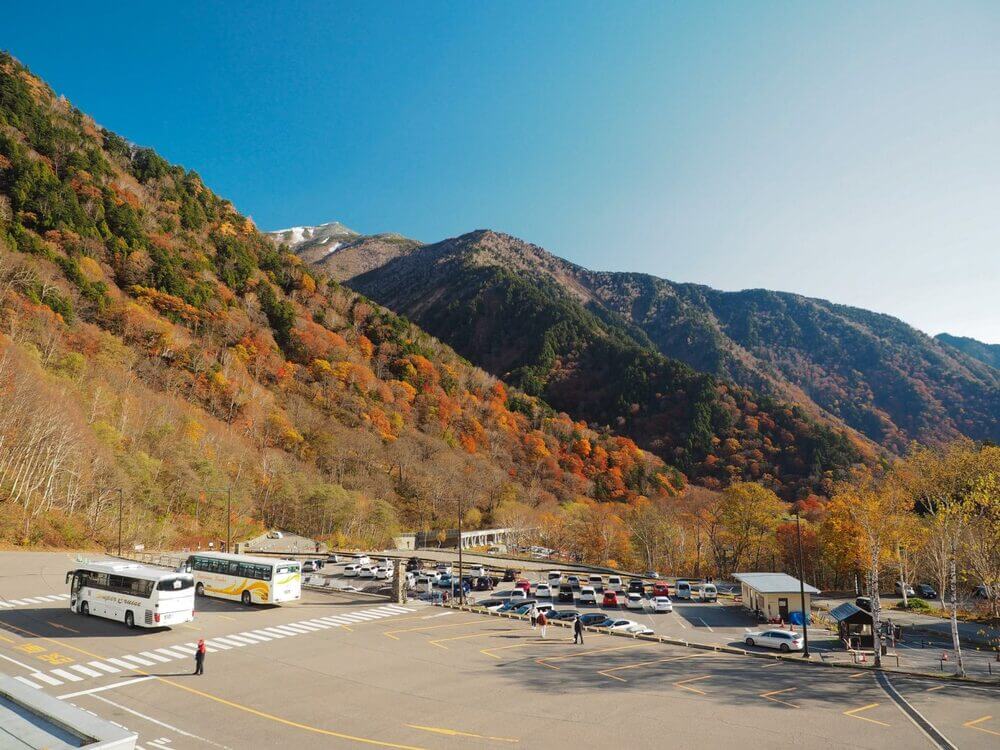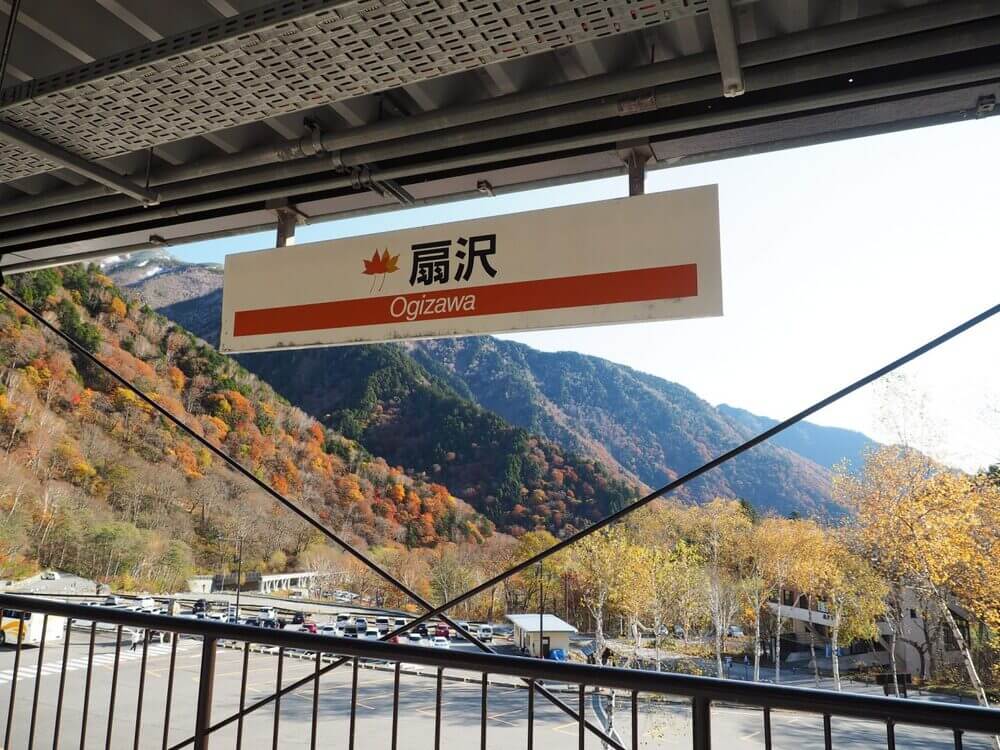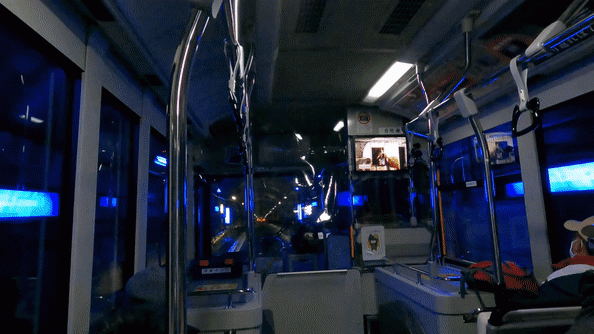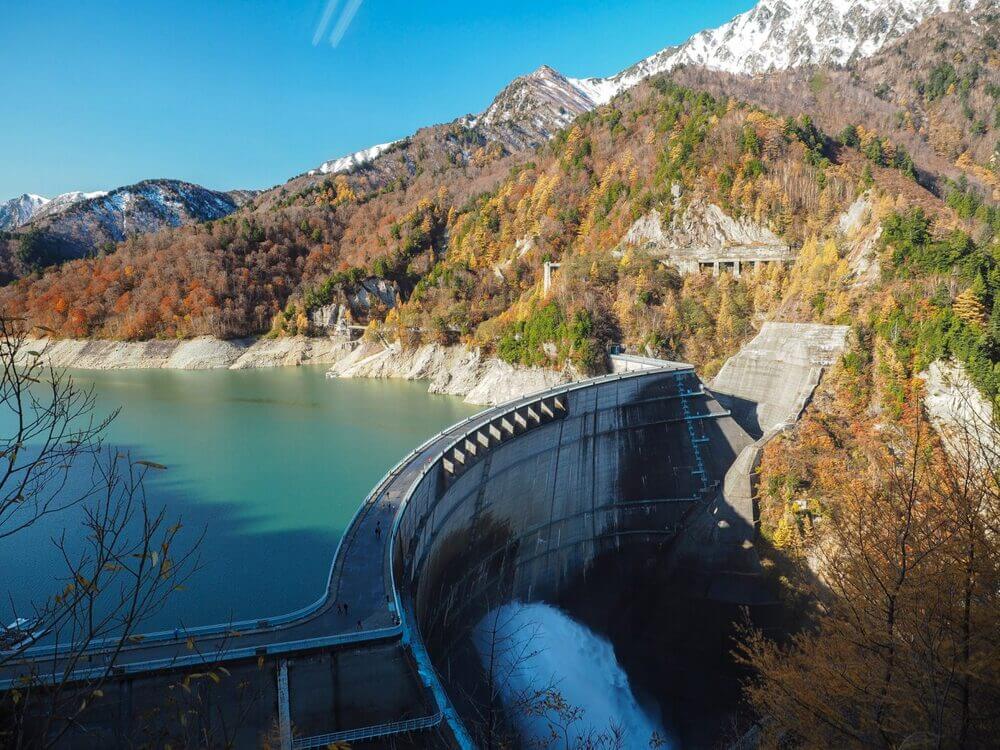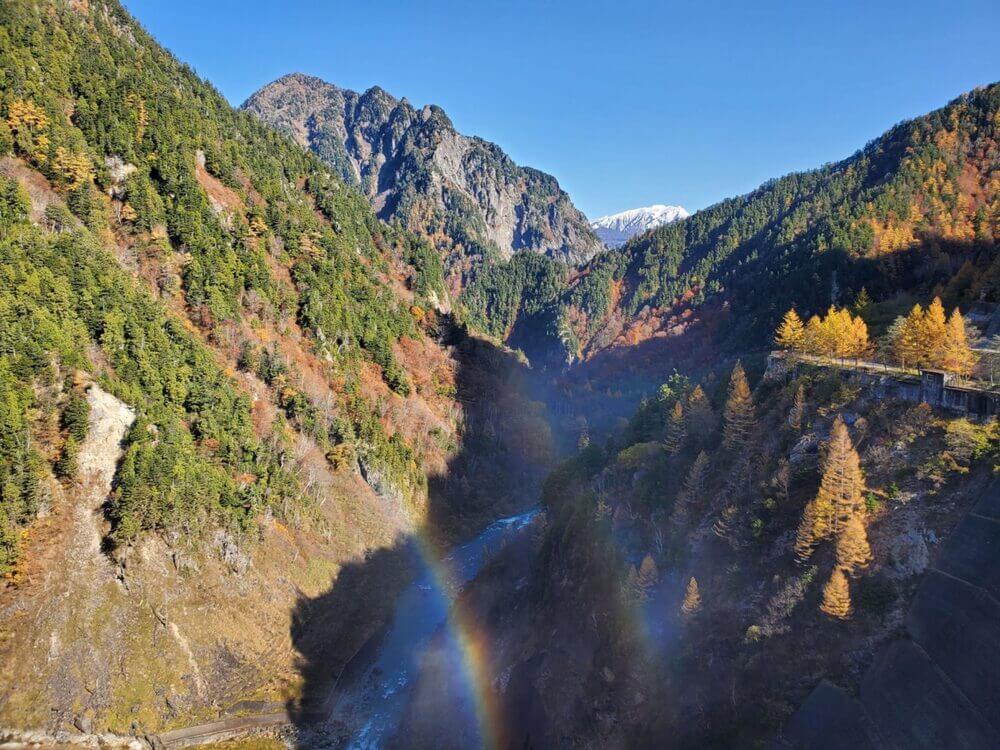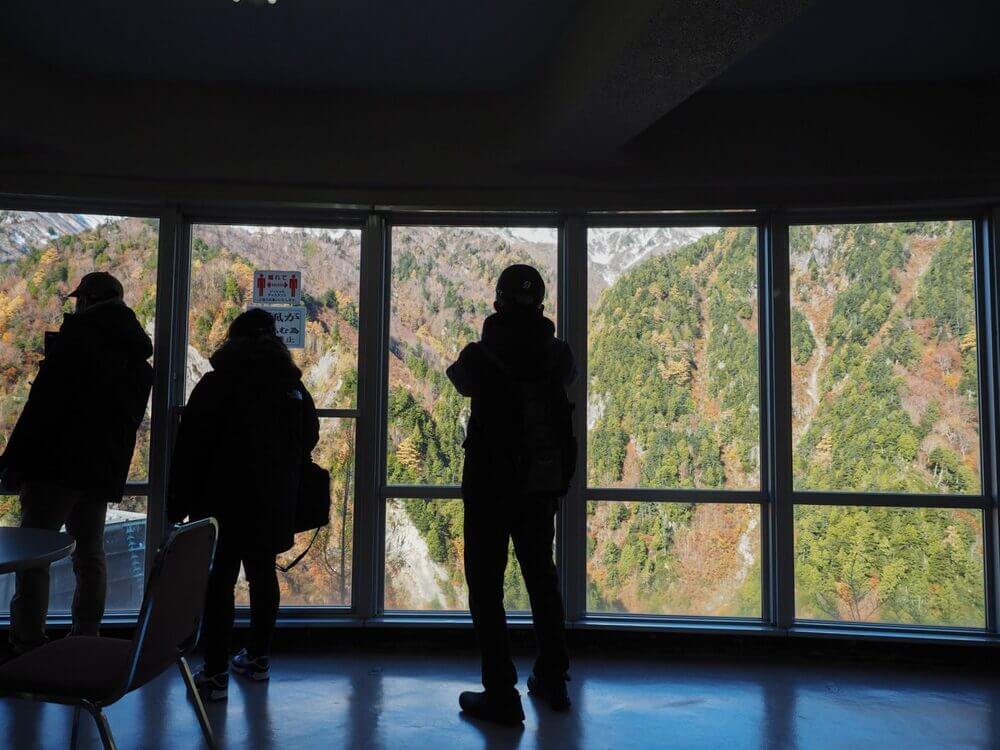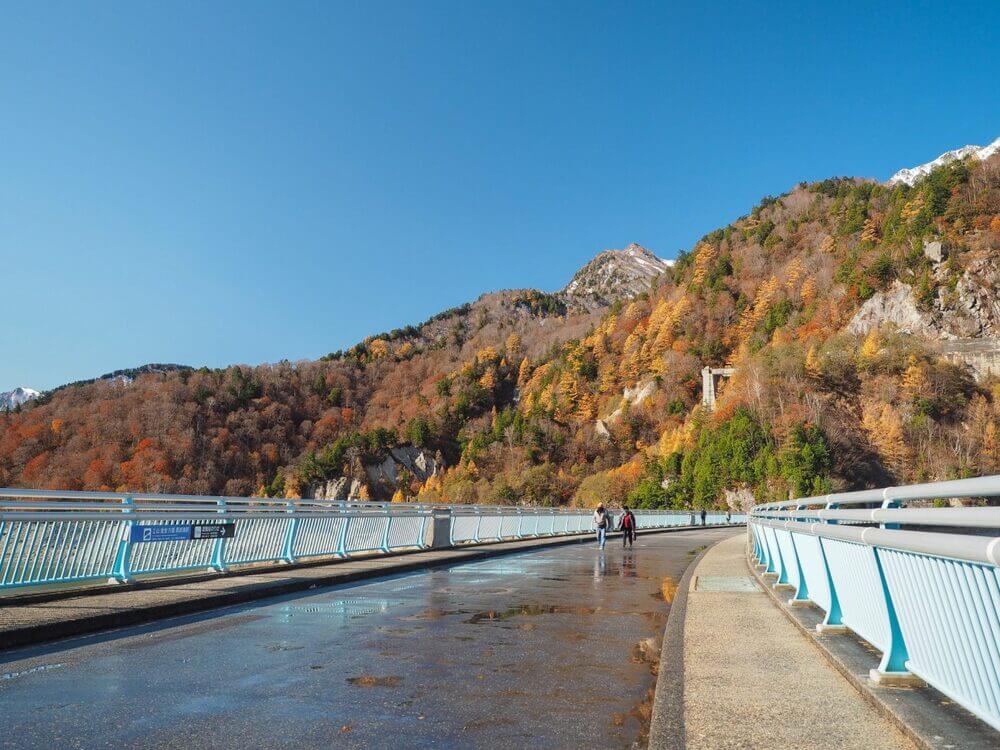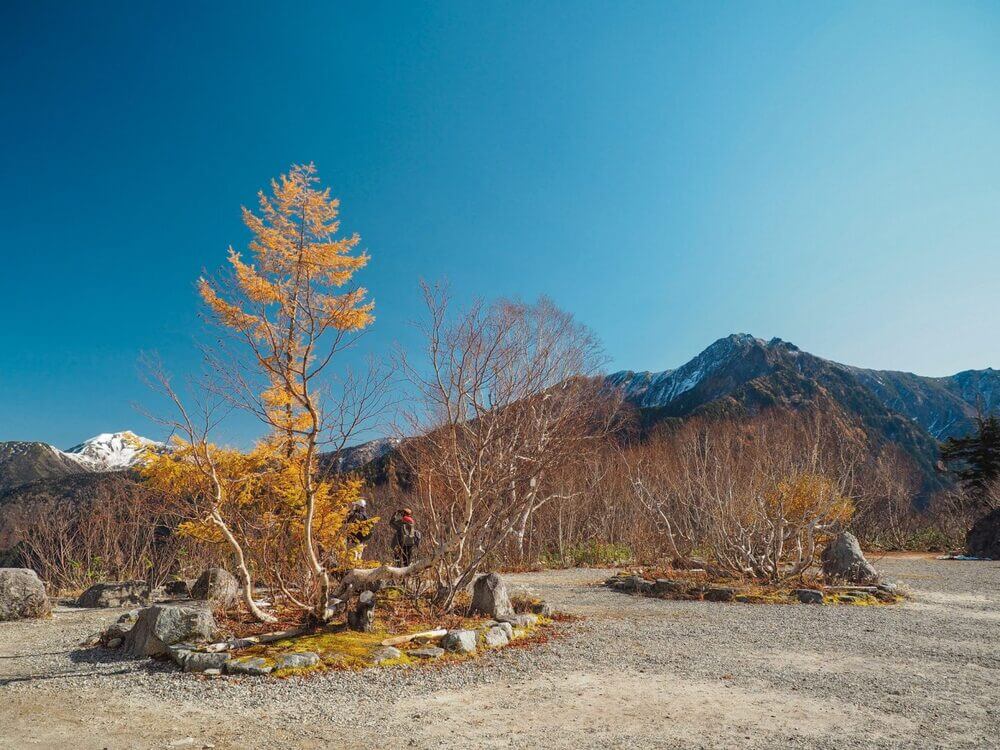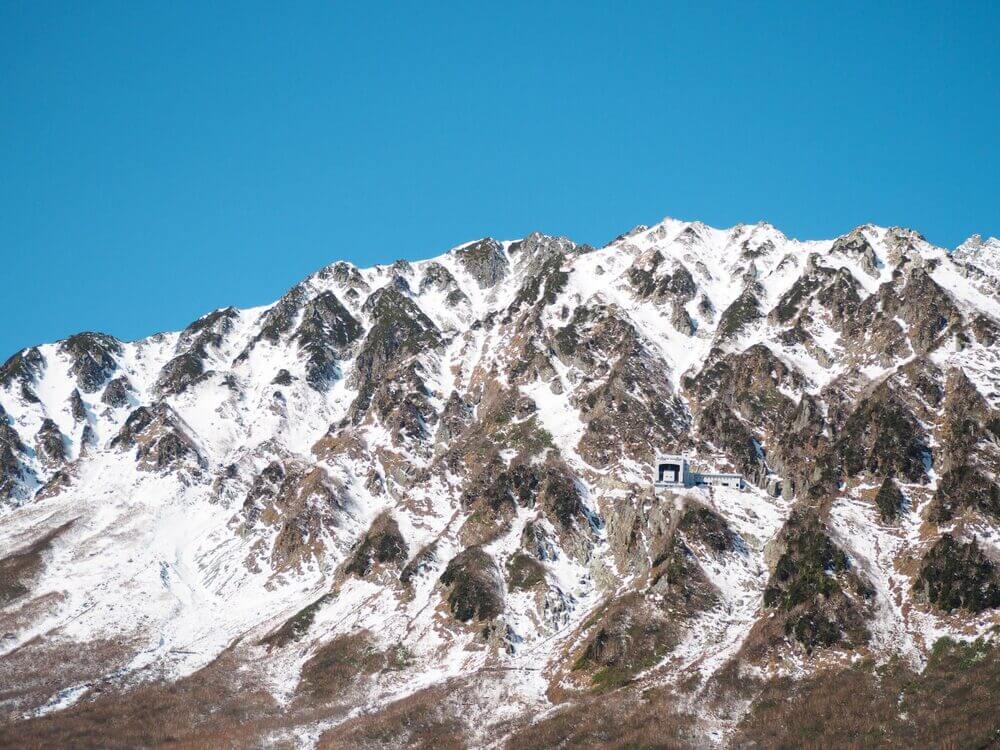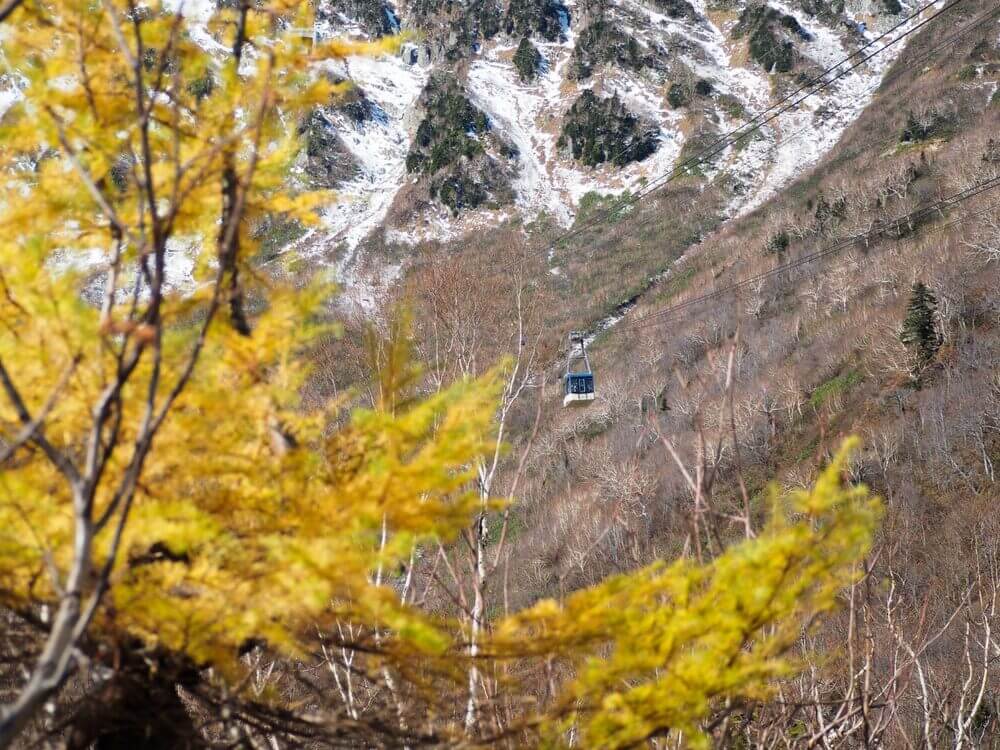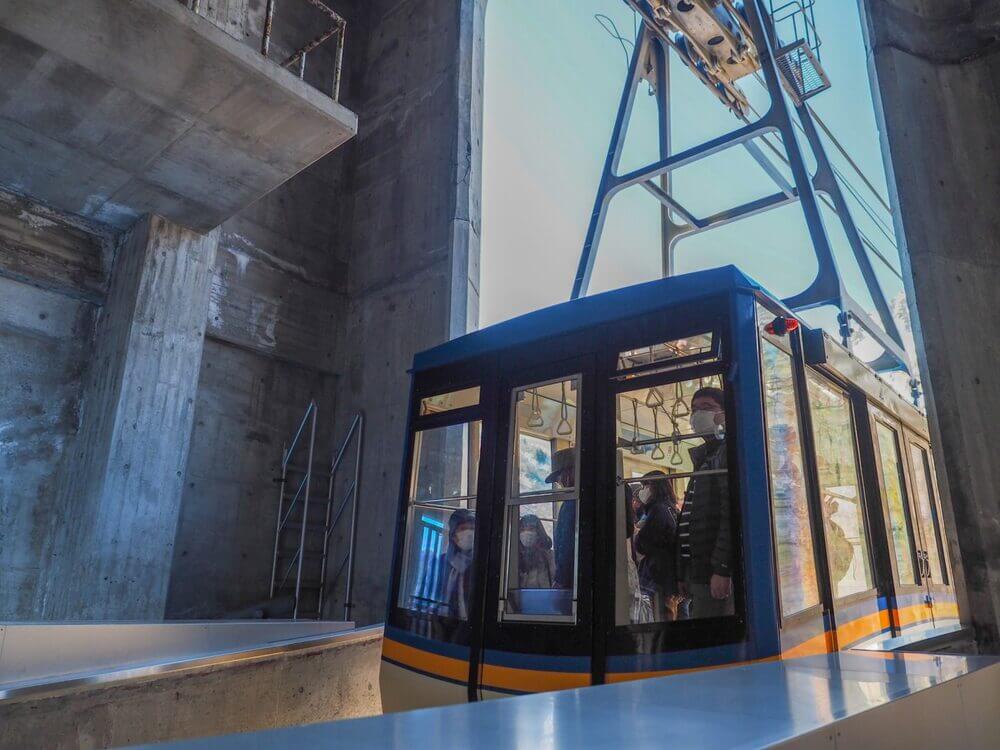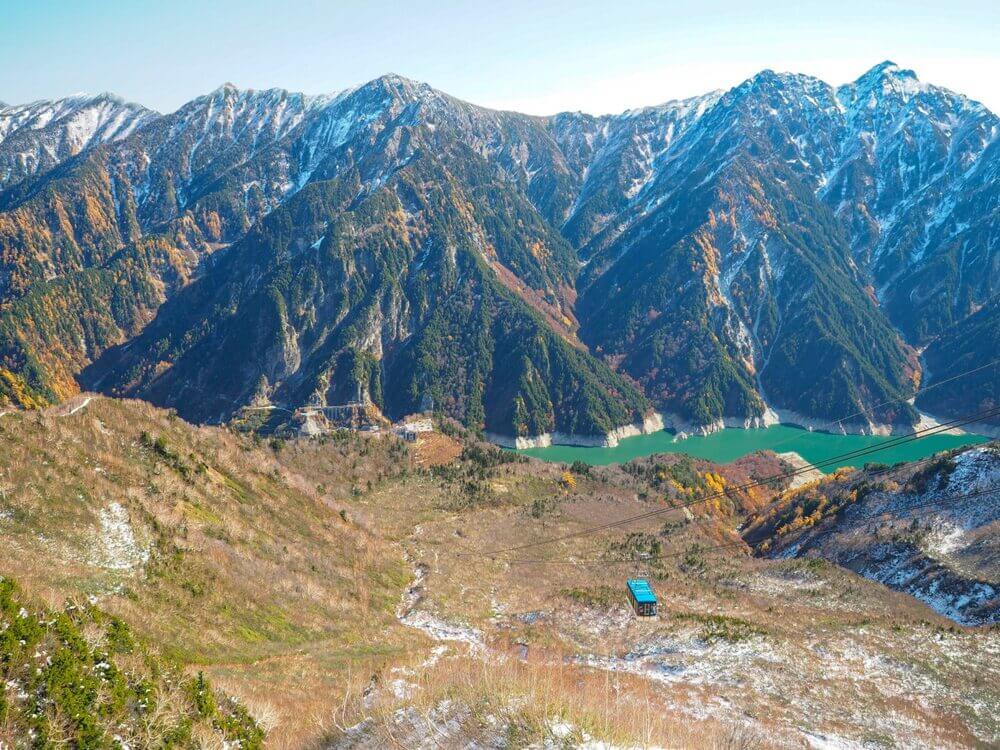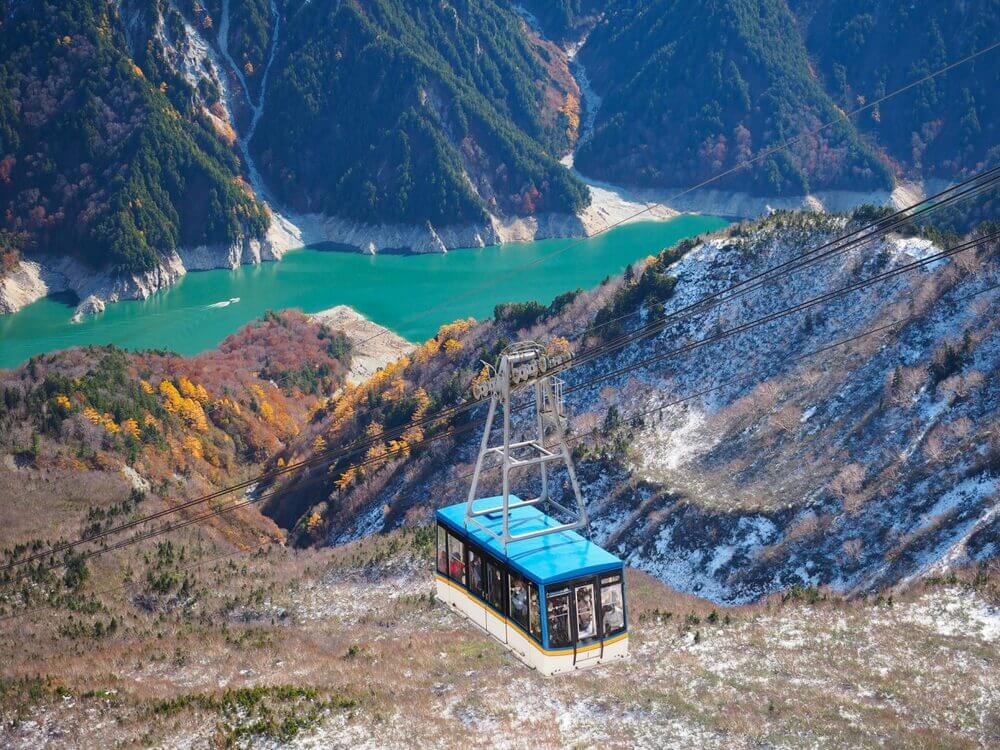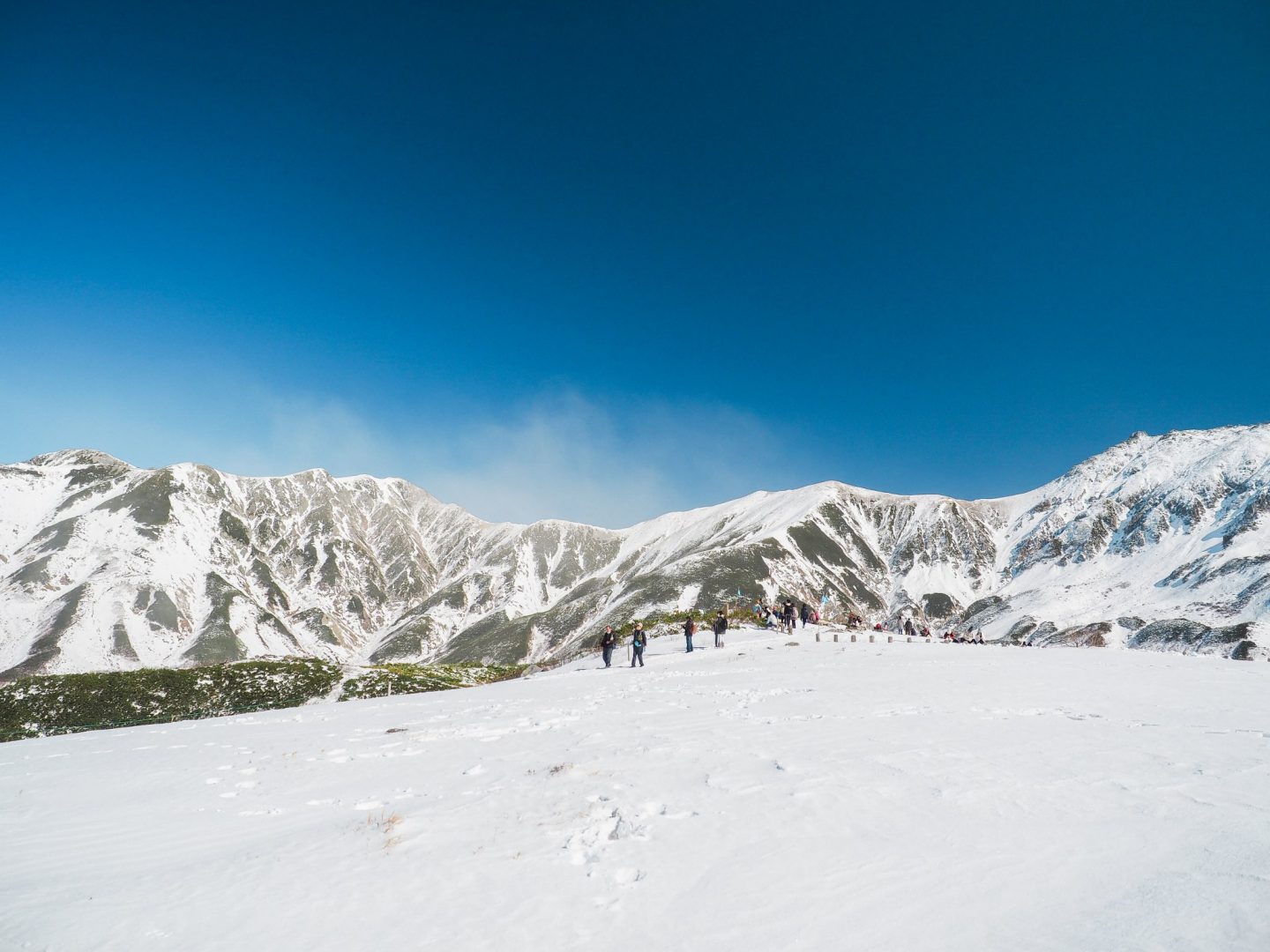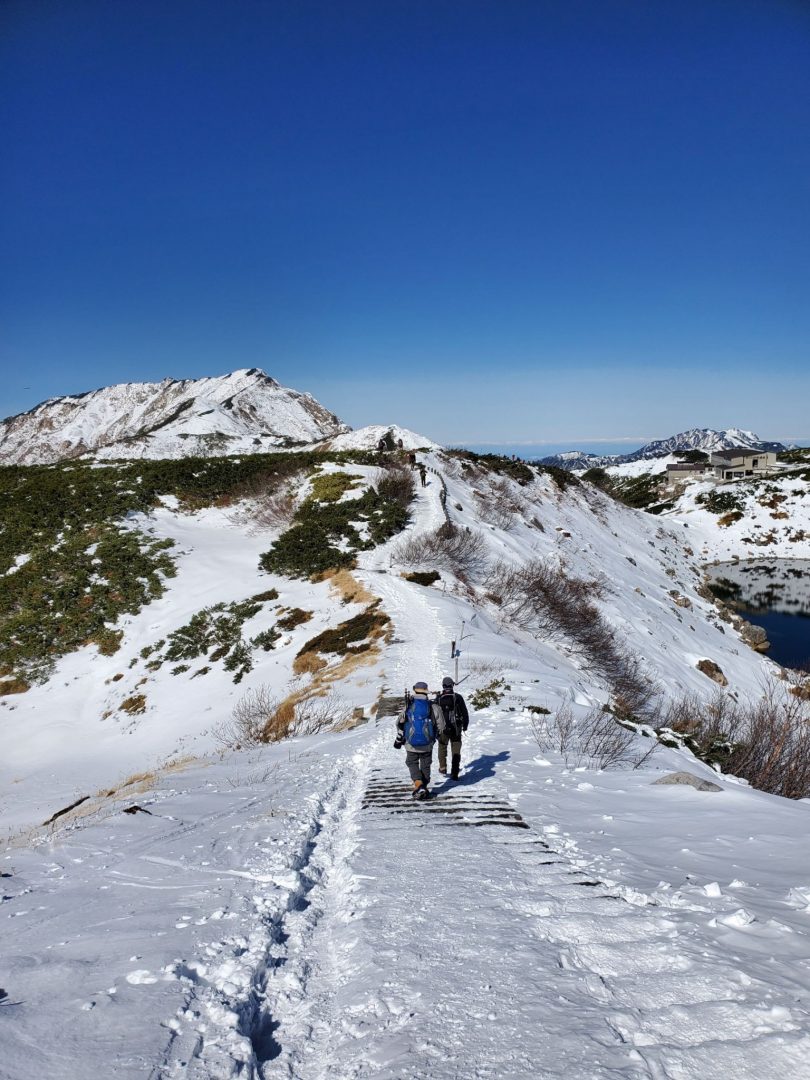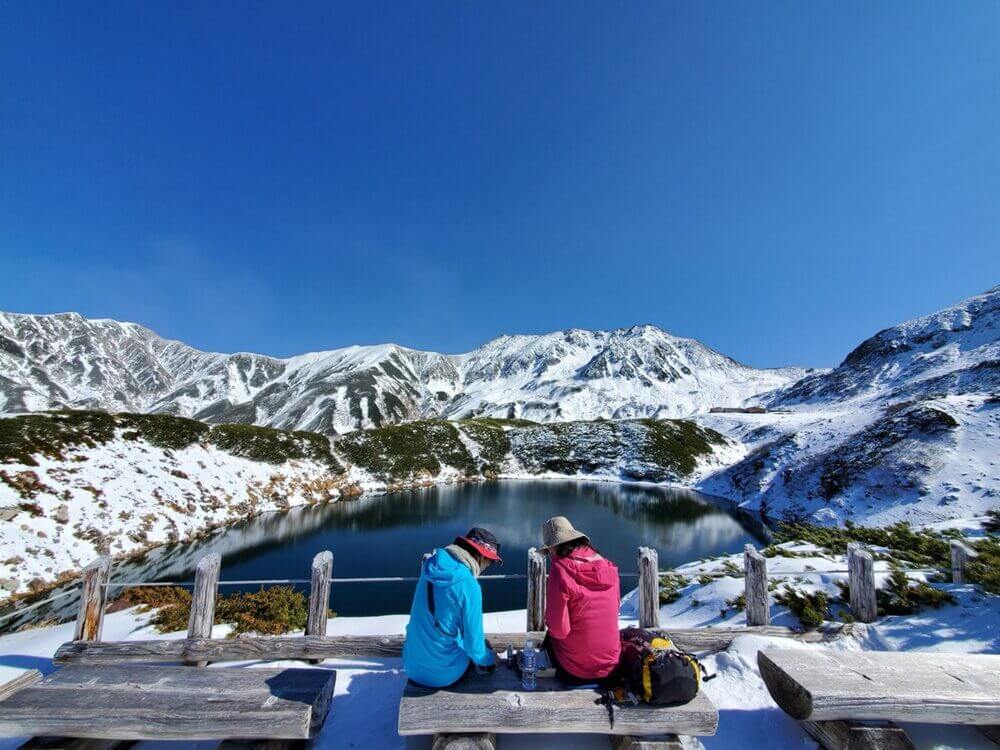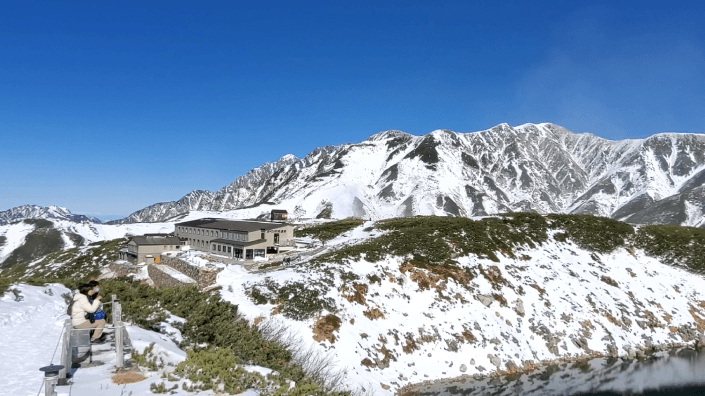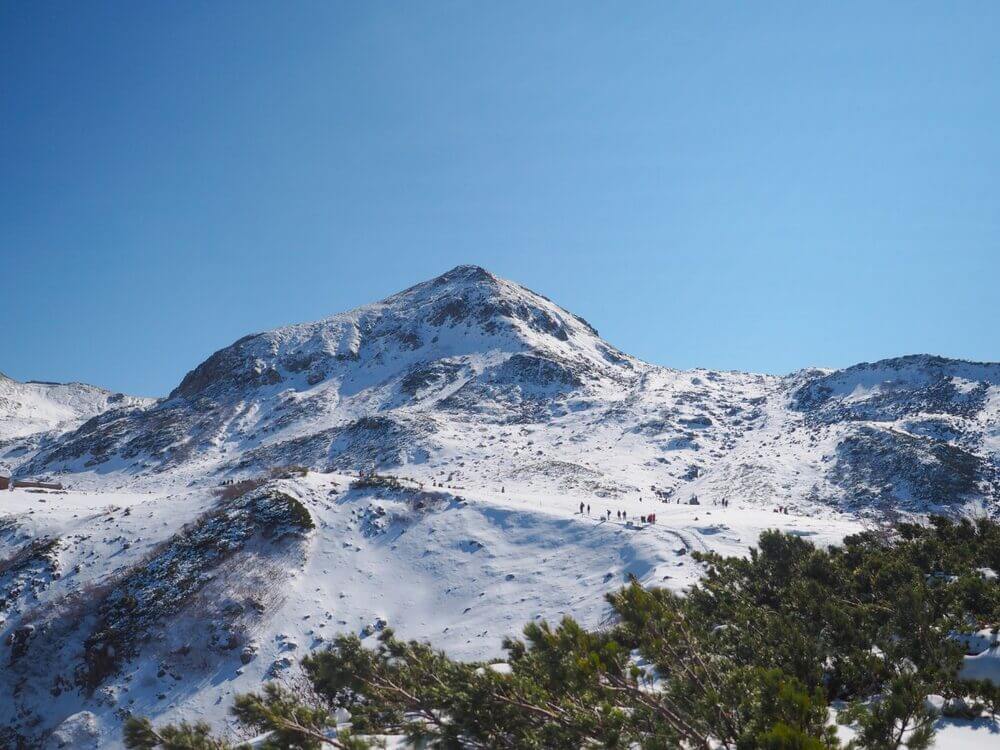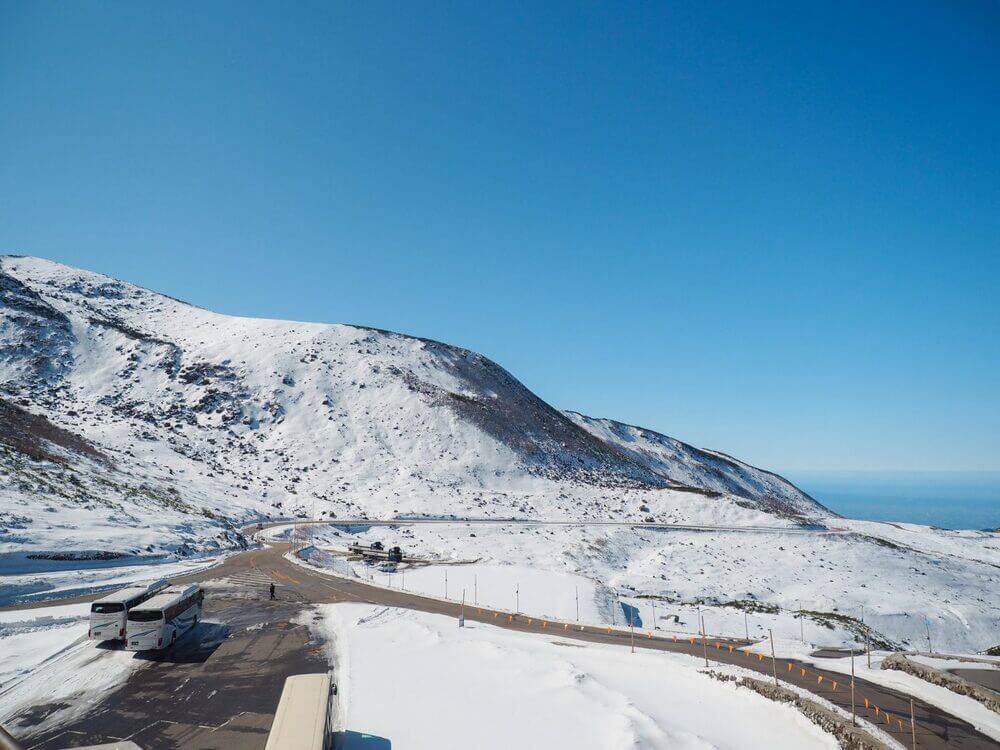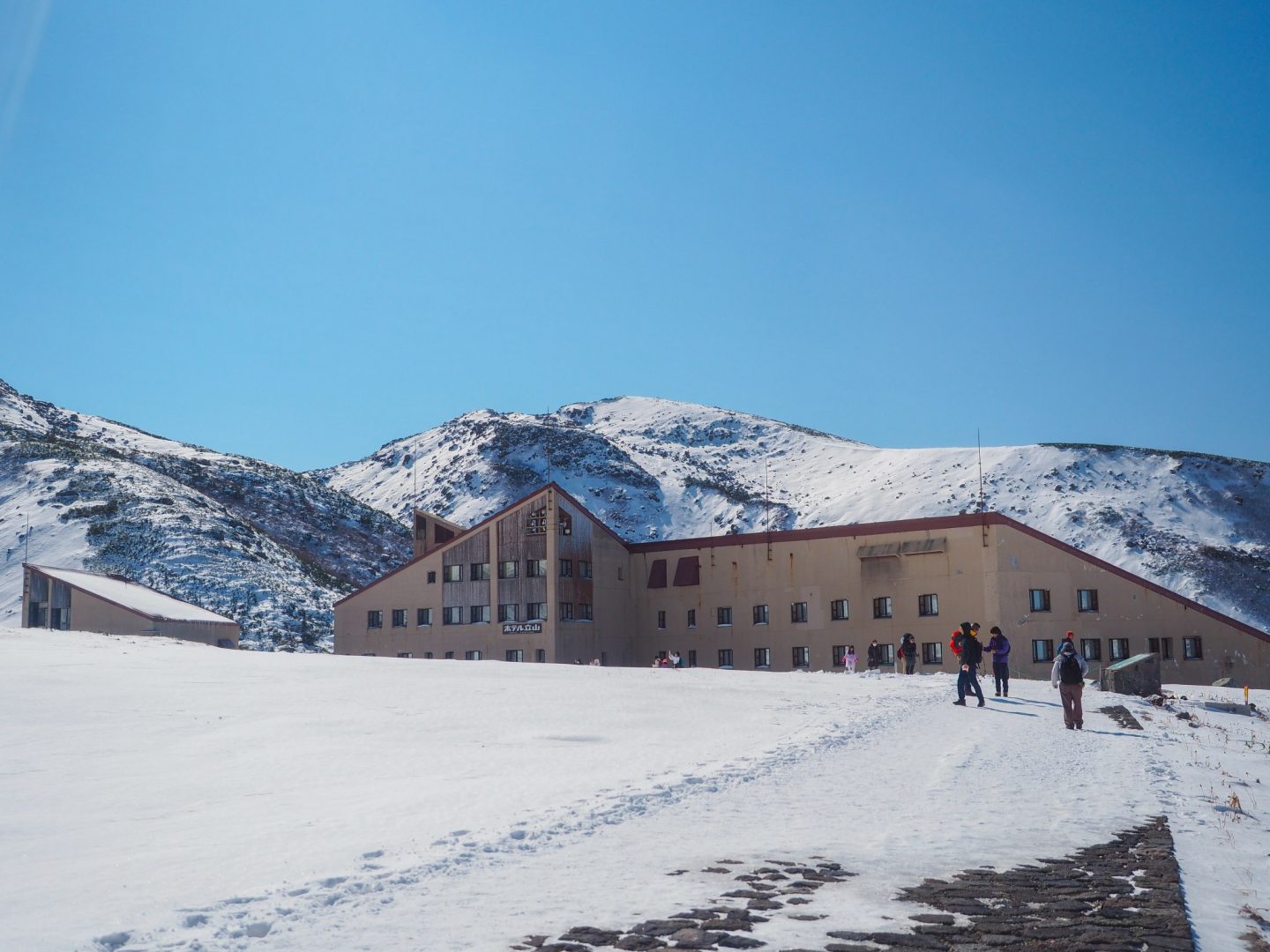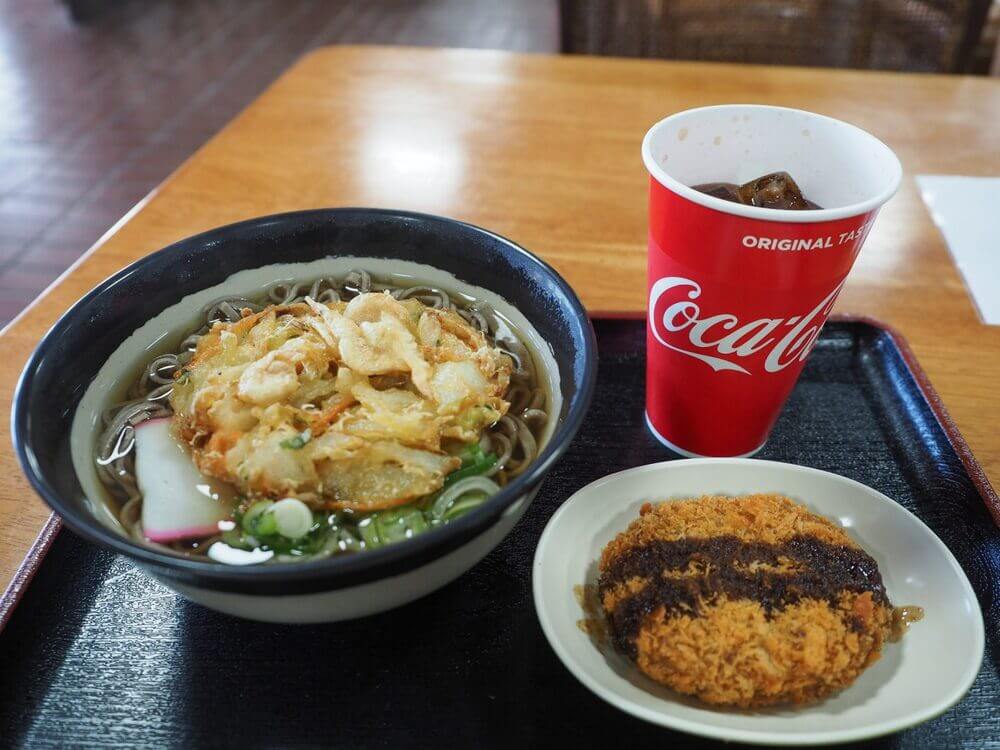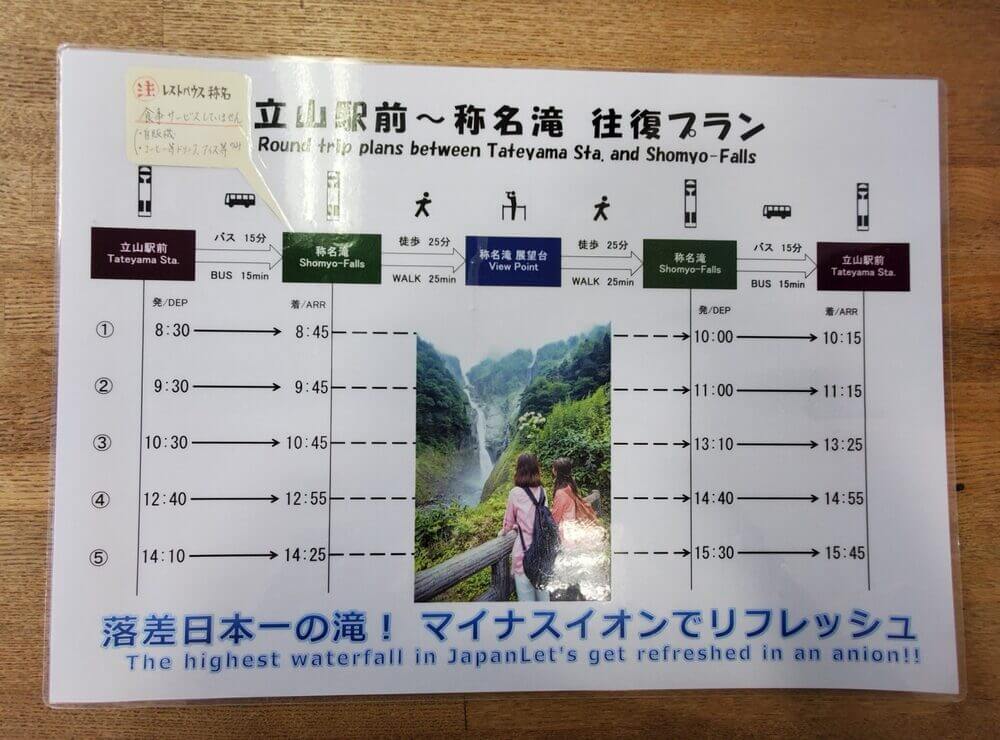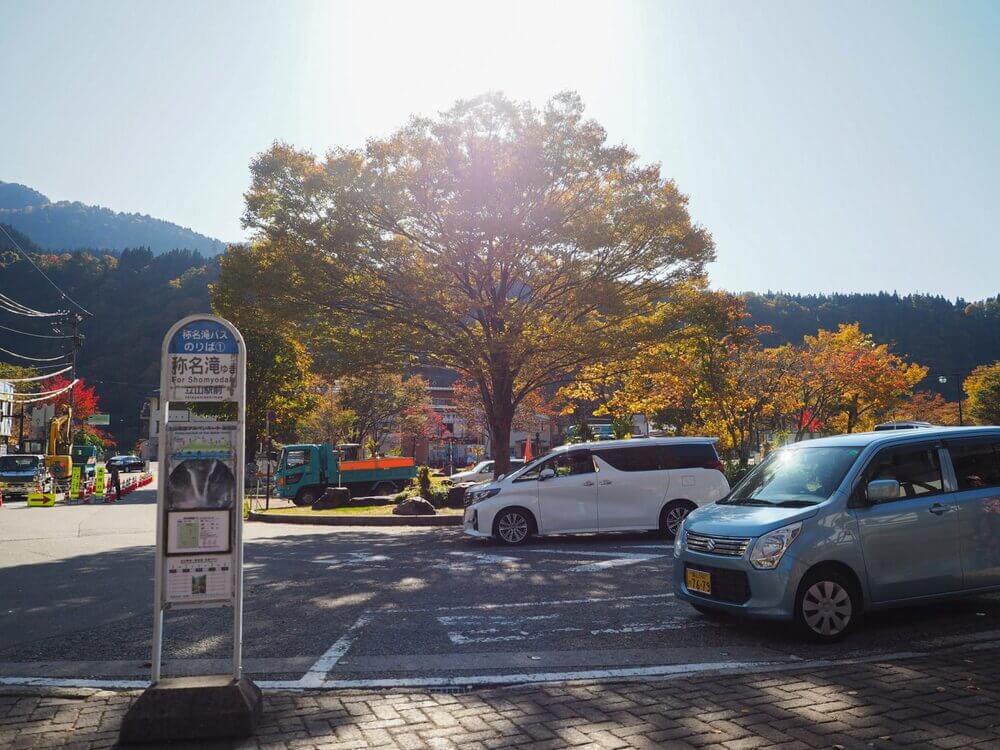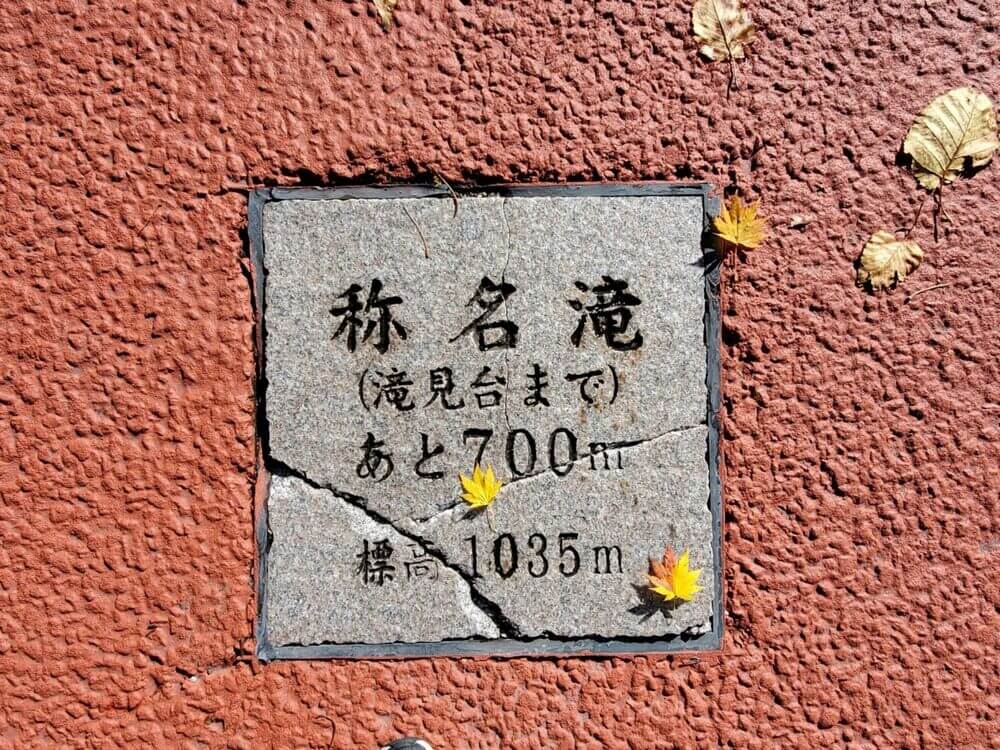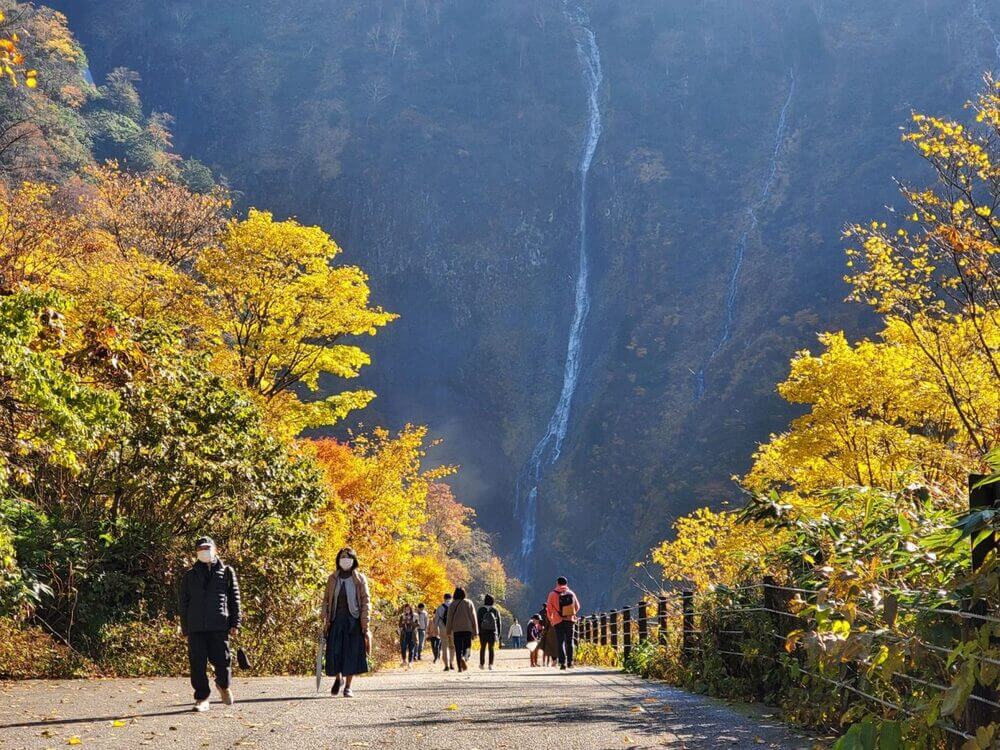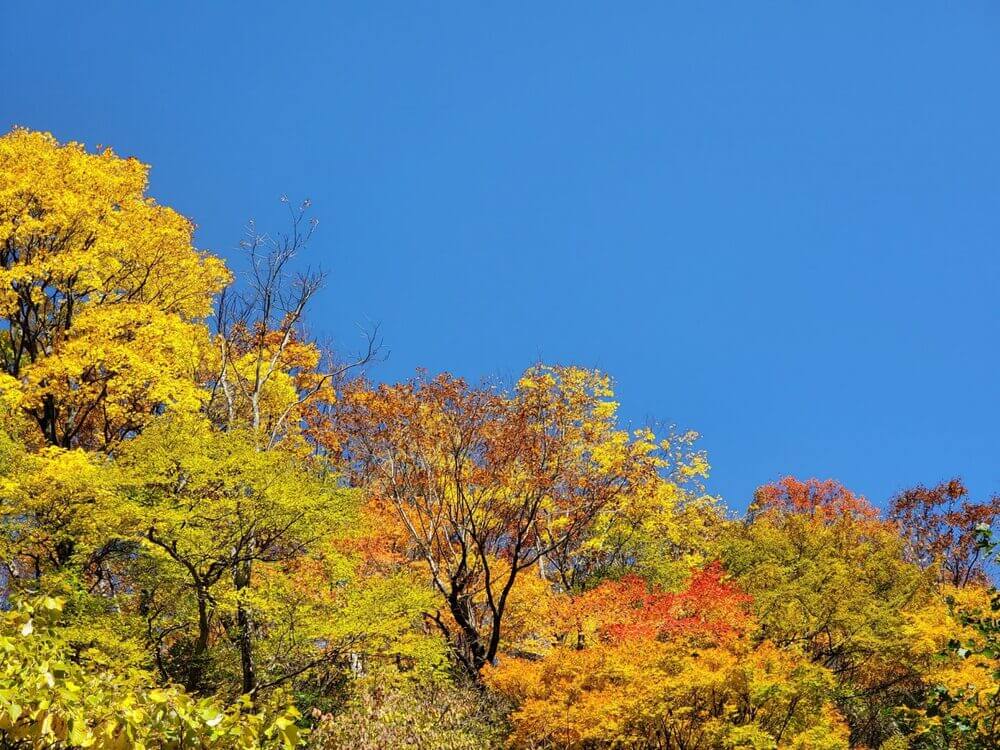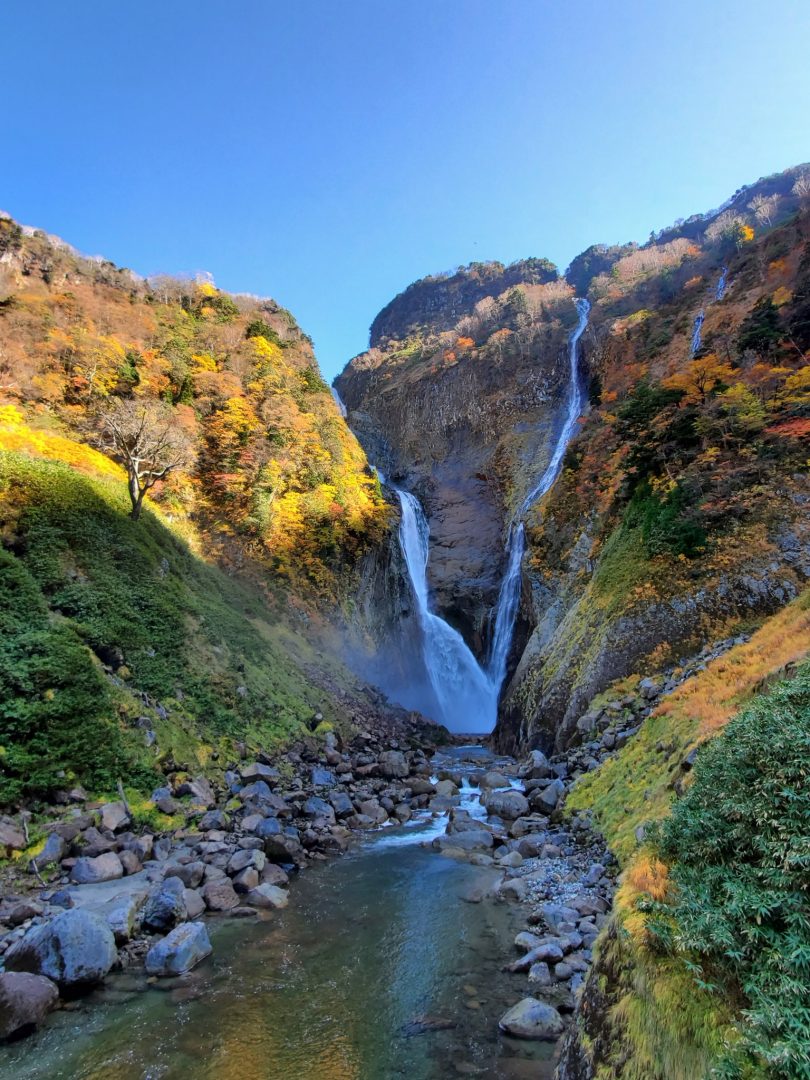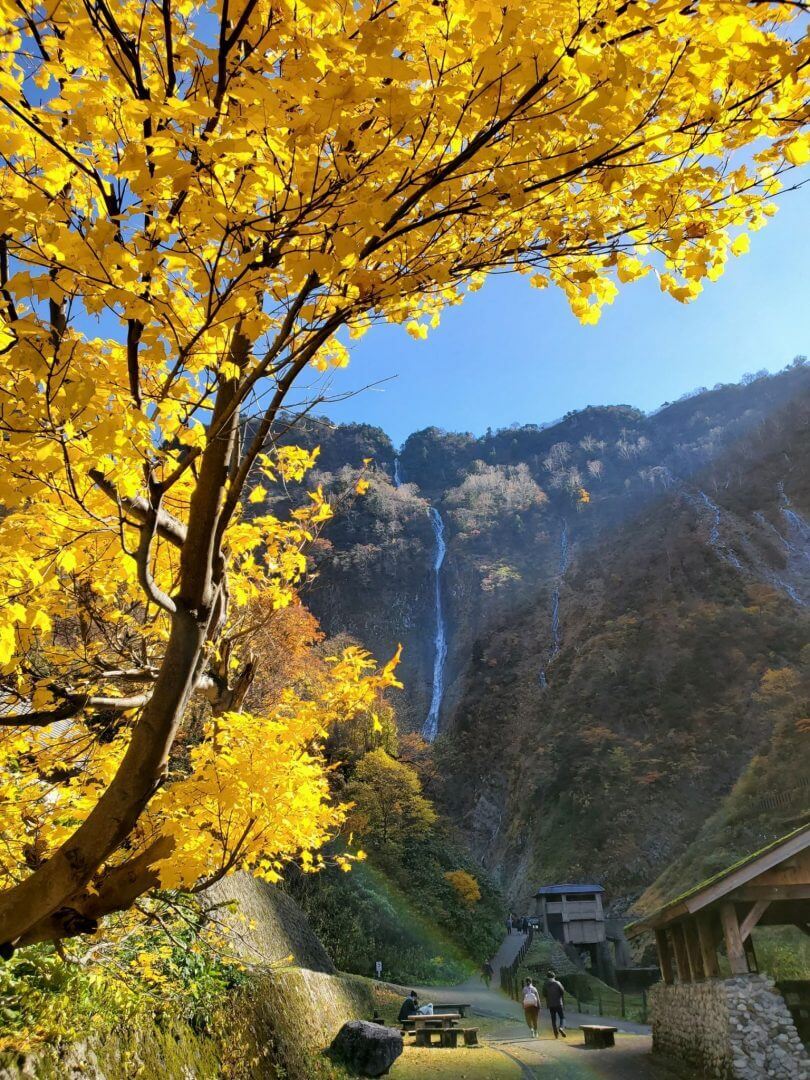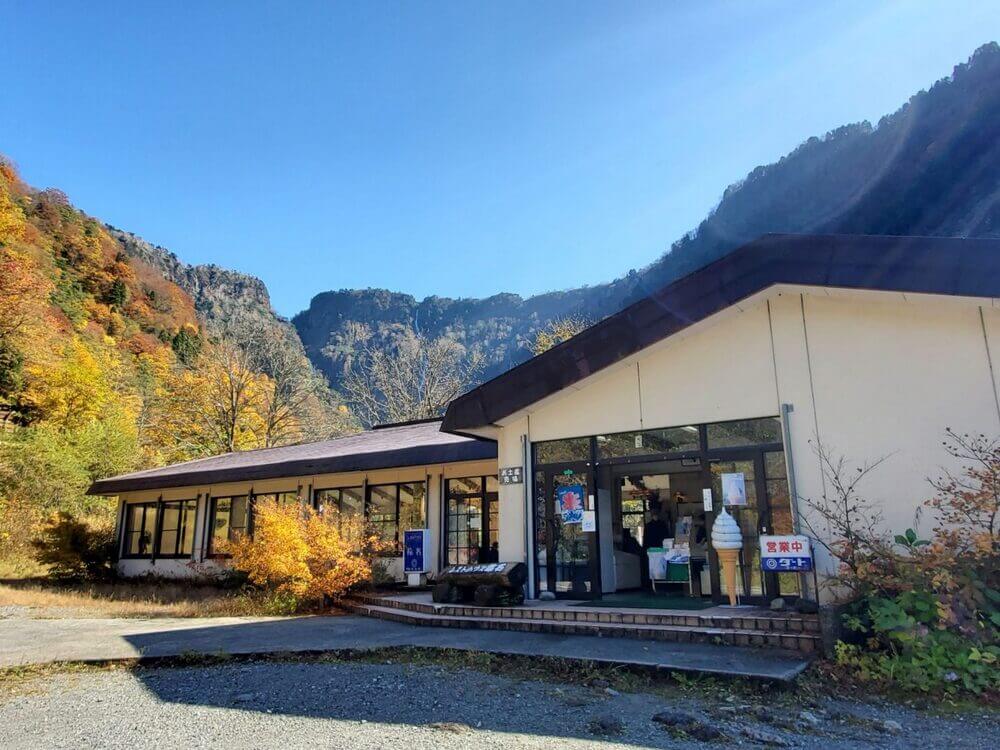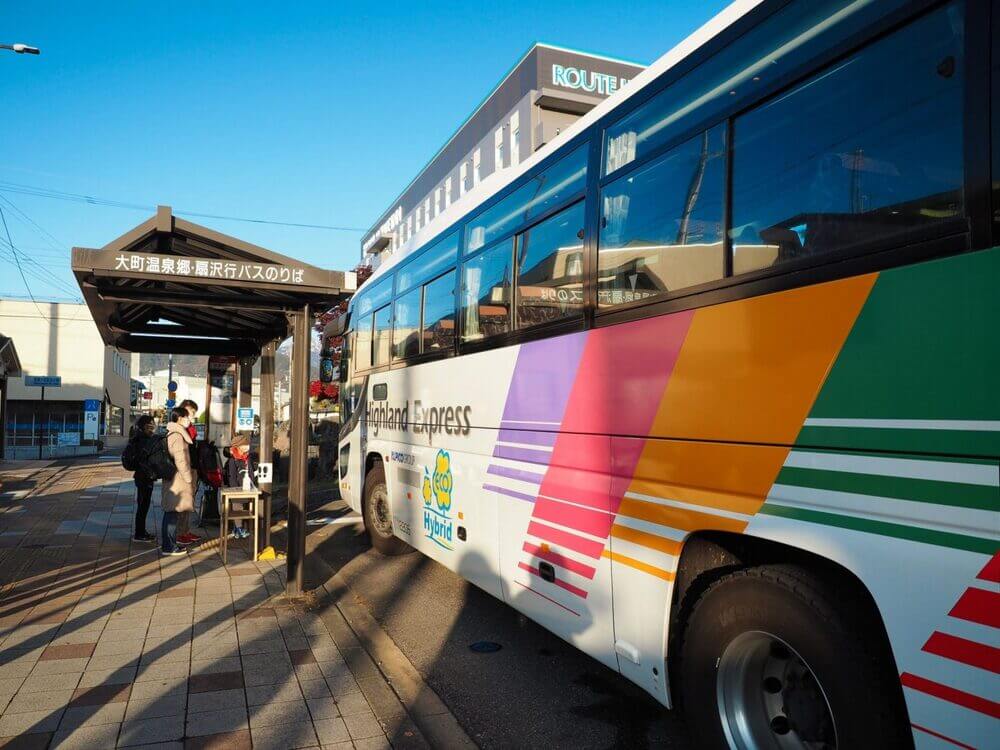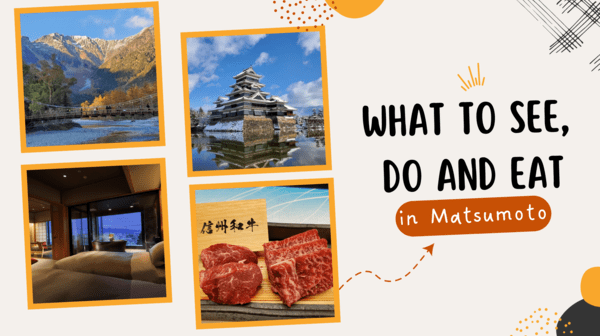Autumn or Winter... Still can’t decide in which season you want to visit Japan next year? Don’t worry; we can deliver both the majestic autumn leaves and snowy landscape all at once, here on the Tateyama Kurobe Alpine Route!
Summary
- 1. What is the Tateyama Kurobe Alpine Route?
- 2. Autumn Leaves Viewing Spots
- 3. Highlight spots on the route
- 3.1. Kanden Tunnel
- 3.2. Kurobe Dam
- 3.3. Kurobe-Daira and Daikanbo Ropeway
- 3.4. Murodo and Mikuriga-ike Pond
- 3.5. Shomyo Falls
- 4. Getting to Tateyama Kurobe Alpine Route (from Nagano side)
- 4.1. From Nagano to Ogizawa
- 4.2. From Matsumoto to Ogizawa
- 4.3. From Shinjuku to Ogizawa
What is the Tateyama Kurobe Alpine Route?
The Tateyama Kurobe Alpine Route is a scenic mountain route passing through Mt. Tateyama, which is a part of the Northern Japan Alps, from Nagano to Toyama prefecture. The route is about 37.2km long, but you will not get bored because of the beautiful changing landscapes and the fun of riding various modes of transport, such as ropeway, trolley bus and cable car. Below is a graphic illustration of the route, accounting for distances between stations and the available means of transport.
The Tateyama Kurobe Alpine Route is most known for its towering snow walls during the spring season. It attracts more than 250,000 international visitors in a year (Data as of 2017). By the way, there are still other snow walls in Japan, although not as high as the Tateyama Kurobe. The one in Norikura is a worth of mention.
Read also: Norikura Snow Walls: Tateyama Kurobe’s doppelganger
Since there are so many articles about the Tateyama Kurobe Alpine Route in spring, this blog will show you the different charms of different seasons of Tateyama Kurobe Alpine Route.
Autumn Leaves Viewing Spots
Due to the elevation gap of 1,975 meters from the lowest to the highest point, you have a great opportunity for you to enjoy the striking autumn leaves for a longer time. The leaves start to change their color from a higher altitude in around mid-September. The latest you can see the autumn leaves is by the end of October, or until early November around the foothill area.
Let’s check where and when you can spot the autumn leaves on the route.
Highlight spots on the route
This time we went for the one-day plan, starting from Nagano and going through the whole route to Toyama side. For your reference, all the photos here are taken at the end of October.
Kanden Tunnel
The entrance to the Tateyama Kurobe Route from Nagano side is Ogizawa Station. From here, you will ride an electric bus through Kanden Tunnel to Kurobe Dam. The combined ticket for traveling from the Ogizawa Station to Tateyama station is 8,430 yen for one-way, and 14,150 yen for a roundtrip.
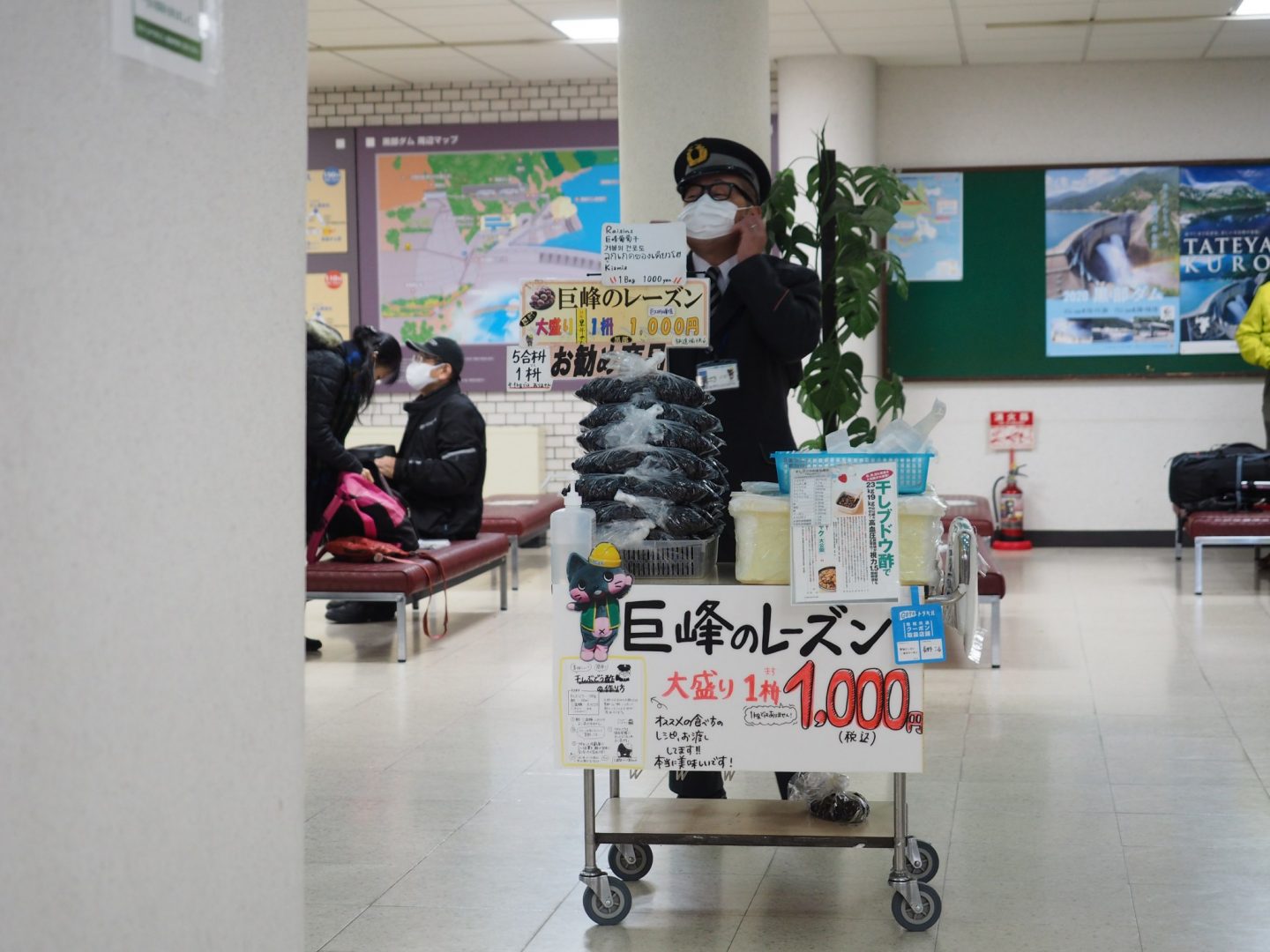
The Kanden Tunnel (or Omachi Tunnel) has a very interesting history and story. It was built in 1956 to be used as a channel for transporting materials through Mt. Akazawa to the dam construction site. At first, the construction was carried out at a very high speed but had to stumble into a fault fracture zone about halfway into the tunnel. Reportedly, 660 liters of 4-degree Celsius groundwater spurted out from the fracture zone every second, making it almost impossible to continue the work. Somehow, they managed to drain the gushing water out the shaft and complete the tunnel 7 months later.
During your ride through the tunnel, you can have a glimpse of the hardest part of construction as the section is illuminated in blue light.
Bus routes to Ogizawa Station
Buses from Nagano station to Ogizawa >
Buses from Shinano-Omachi to Ogizawa >
Buses from Shinjuku to Hakuba (via Ogizawa) >
More details on how to get to Ogizawa Station are at the end of article.
Kurobe Dam
Kurobe Dam is the largest arch-dam in Japan. It is 186 meters high and 492 meters long. The construction of Kurobe Dam started in 1956 in the remote area and its completion was achieved in 7 years.
After the end of WW2, Japan faced a serious shortage of electricity in the Kansai region due to the rapid economic growth. Although well known as a secluded and subject to harsh environment, which made it hardly accessible, it was decided that a hydroelectric dam should be constructed here at the Kurobe Gorge.
It is said that there were 10 million workers involved in the construction. Unfortunately, due to accidents, there were 171 fatalities among the workers during the 7 years of building the Kurobe Dam.
One of the most iconic photos of the Kurobe Dam is the water being released with a rainbow crossing over. In just one second, there are more than 10 tons of water being discharged to generate electricity. The dam discharge is scheduled every day from late June to mid-October.
Water Discharge Schedule
26 June – 30 July: 6:00 – 17:30
1 August – 10 September: 6:30 – 17:00
11 September – 15 October: 7:00 – 16:30
*The water discharge may be suspended depending on weather conditions.
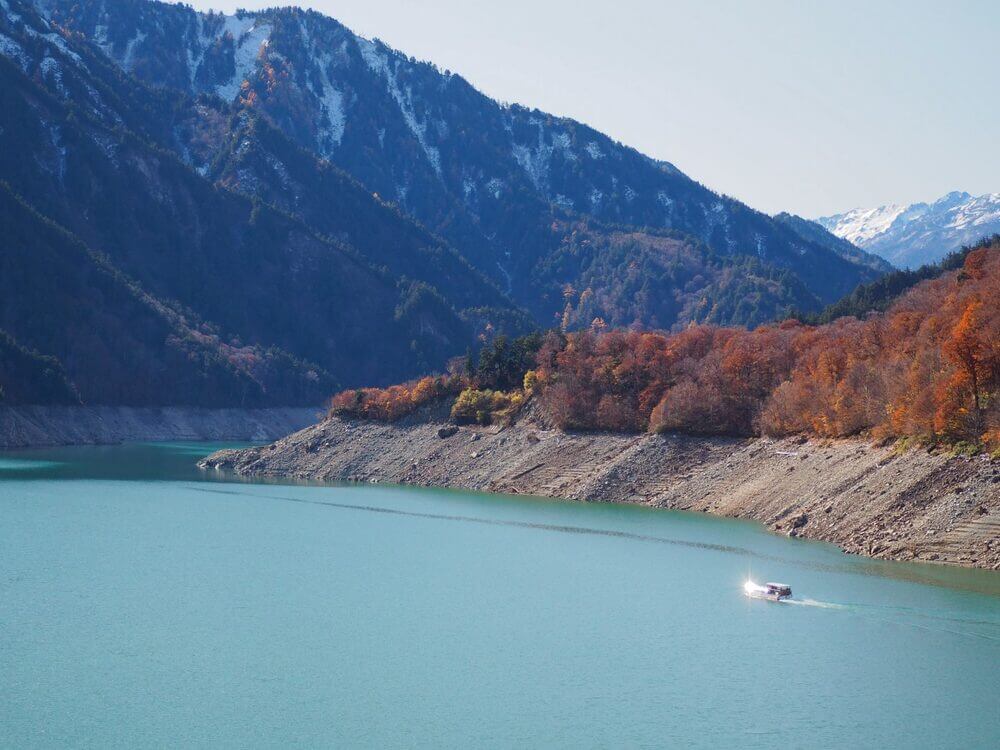
Around the dam area, there are plenty of things to do, such as cruising on Lake Kurobe, lakeside walking tour, learning the history of the dam at the museum, etc.
Kurobe-Daira and Daikanbo Ropeway
From Kurobe Dam, it takes only a few minutes riding a cable car and ropeway to Kurobe-Daira and Daikanbo. At both stations, there are leisure-taking terraces in the panoramic views of Tateyama mountain range. As we had planned to take a bus to Shomyo Falls at 14:10, we had only a few minutes to shift to the next spot, thus we didn’t have enough time to have a look around.
Murodo and Mikuriga-ike Pond
Now we have reached Murodo, standing at an altitude of 2,450 meters. The landscape around Murodo is completely different from the what we see below. As soon as you get out of the building, bam, the bright sunny snowscape forces you to squint your eyes right away.
During the green season (July – October), you can climb the peak of Mt. Tate (3,015m) in only about 3.5hrs. It is an easy hiking course, recommended even for inexperienced hikers.
From Murodo Bus Terminal, it is about 10-minutes walking distance to Mikuriga-ike Pond. In addition to proper winter clothes, a sunscreen and sunglasses we highly recommended, as well as a pair of crampons (if you have one), when traveling to Murodo in late autumn. At least 4 people, including myself, fell hard on the ground due to the slippery snow. Be careful!
The surface of Mikuriga-ike Pond that reflects the sky’s deep blue color and the mountains covered by white snow in the back create such a spectacular landscape!
A panoramic view from Mikuriga-ike Pond viewpoint. The building on the left is a mountain hut with a natural hot spring, called “Mikuriga-ike Onsen”. It is the highest natural hot spring in Japan, at the altitude of 2,410m.
Apart from the Mikuriga-ike Pond, there are still many interesting things to explore. Next time we will surely bring you to see more in the area.
Looking out from inside the bus, the scenery keeps changing every time the bus turns at next curve. Before you know it, you are already in an autumn forest again. Time certainly flies when you are surrounded by pleasant surroundings.
Shomyo Falls
It was around 1:30PM when we arrived at the Tateyama Station. We had a late lunch at a restaurant inside the station and got ready to board the bus to Shomyo Falls. One thing to remember is that there are only 5-6 roundtrips a day and it takes about 25-30 minutes (approx. 1.3km) from the bus stop to walk to the viewpoint. So plan your time in advance.
Not only from the viewpoint but also from the walking path to the falls, you can see the colorful orange and yellow leaves, too.
Shomyo Falls is the highest waterfall in Japan with the height of 350 meters. It is one of the 100 famous waterfalls in Japan. For me, it is the second most beautiful waterfalls in Japan after the Nachi Falls in Wakayama. The open period is from early May through mid-November.
Only when there is enough water, you can see Hannoki Falls next to Shomyo Falls on the right side. Water plunges down for an incredible 500 meters; remarkably higher than the Shomyo Falls!
There’s only restaurant on the way to the falls. It’s too bad that due to the ongoing pandemic, the meal and snack services have been temporarily stopped. Only the souvenir corner remains open.
Not only the wonderful natural places within the prefecture itself, Nagano is also the best transport hub to the nearby majestic mountainous attractions. No matter what type of traveler you are, believe us, it is hard not to fall in love with the beautiful peaks of Japanese Alps that majestically appear before your eyes!
Getting to Tateyama Kurobe Alpine Route (from Nagano side)
From Nagano to Ogizawa
Take a bus from bus stop no. 25 at the east exit of Nagano Station. It takes about 1hrs 45min to Ogizawa Station, which is the entrance to the scenic Tateyama Kurobe Alpine Route.
Bus timetable for Nagano – Ogizawa line >
(via Shinano-Omachi) >
Fare
Nagano station to Shinano-Omachi: 2,600 yen
Nagano station to Ogizawa: 3,100 yen
(*No round-trip discount fare)
From Matsumoto to Ogizawa
Take a JR train (Oito line) from Matsumoto Station and get off at Shinano-Omachi Station. It takes about 1 hour and costs 680 yen for a one-way ticket. Then transfer at Shinano-Omachi Station to the Alpico bound bus for Ogizawa Station. The bus ride takes about 40 minutes. The sceneries from both train and bus are so amazing; you will never get bored during the ride.
Bus timetable for Shinano-Omachi – Ogizawa line >
Fare
One-way: 1,390 yen
Round-trip: 2,500 yen
From Shinjuku to Ogizawa
The most convenient way to travel to Ogizawa Station from Tokyo is by the Shinjuku – Hakuba bus. The bus that departs from Shinjuku Station (west exit) at 23:15 will stop at Ogizawa station at 05:32, early morning.
Other buses don’t go to Ogizawa and only stop at the Shinano-Omachi Station. From there, please transfer to the bus for Ogizawa (Shinano-Omachi – Ogizawa line). Please note that some buses operate on limited dates only.
Bus timetable for Shinjuku – Hakuba line >
(via Shinano-Omachi and Ogizawa)
Fare
Shinjuku to Ogizawa: 5,800~7,000 yen
* Additional fare (400 yen per adult, 200 yen per child) is required when traveling during peak season.
** Additional fare (1,400 per person) is required for night bus services.
*** The above fare table is when booking through internet.


